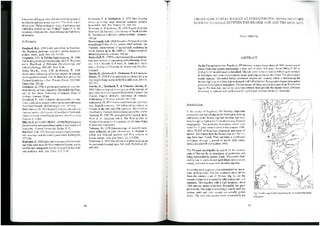Prehistorical cereal raising at Forsandmoen, south-western Norway : changes between the Bronze Age and the Iron Age
Journal article, Peer reviewed
Date
1992Metadata
Show full item recordCollections
- Articles (AmS) [145]
Original version
Bakkevig, S. (1992). Prehistorical cereal raising at Forsandmoen, south-western Norway : changes between the Bronze Age and the Iron Age. Laborativ arkeologi, 6, 49-56Abstract
On the Forsandmoen site, Rogaland, SW-Norway, a macrofossil study of 7810 charred cereal grains from nine houses representing a time span of about 800 years (from 2990 +/- 70 BP to 2140 +/- 70 BP uncalibrated) is described. The salt water flotation used at Arkeologisk museum in Stavanger, and some improvements in the analysing process is described. The preliminary results indicate: The naked barley (Hordeum vulgare var. nudum) which is dominating the Bronze Age crop is in Iron Age exchanged with hulled barley. In general a change from naked grains to hulled grains takes place. The percentage of wheat species decreases from The Bronze Age to The Iron Age, and in the transition between these periods the emmer wheat (Triticum dioccum) is replaced with spelt wheat (T. spelta) and common wheat (T. aestivum).
Description
"Laborativ Arkeologi" continues as "Journal of Nordic Archaeological Science".
